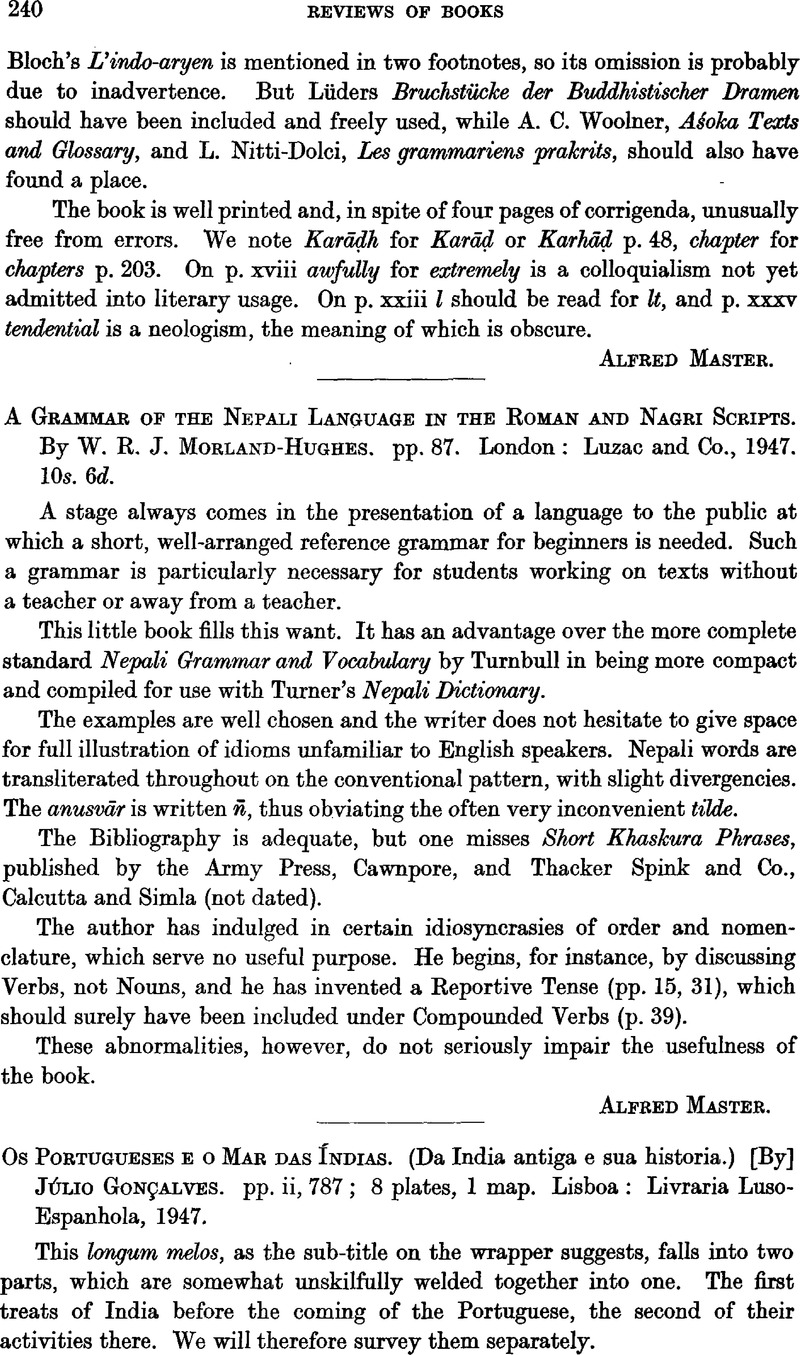No CrossRef data available.
Article contents
Os Portugueses E O Mar Das Índias. (Da India antiga e sua historia.) [By] Júlio Gonçalves. pp. ii, 787; 8 plates, 1 map. Lisboa: Livraria Luso Espanhola, 1947.
Published online by Cambridge University Press: 24 December 2009
Abstract

- Type
- Book Reviews
- Information
- Copyright
- Copyright © School of Oriental and African Studies 1949
References
page 242 note 1 There seems to be on p. 325 a confusion between the travel-notes of Ptolemy Euergetes II and the Geographia of Claudius Ptolemaeus. The Jātaka has no mention of navigation by the magnetic needle, as is stated on p. 328. Our author confuses the Nambudiri Brahmans (whom he calls “Nemrudis”) with the Aryan colonists of Western India generally (pp. 529, 643); and his description of the Nayars as being only the hybrid offspring of the Nambudiris and Dravidian women (p. 397) clamours for correction. The “holocausts” of virgins said to have been offered at the linga (p. 532) are probably mythical. The early history of Ceylon sketched on pp. 642 ff. is very inaccurate, and the derivation of Tambaparuw from “Tapu Eavana” –sic !] is simply ridiculous. Taxila is a long way from Kandahar and Kabul (p. 702).
page 243 note 1 Captain Goncalves writes (p. 552) that this act, compared with the colossal butcheries perpetrated by the Muslims of India and Timur's Tartars, was “quase um acto de benevolência”, if we consider the customs of the age. But the comparison is not permissible, for Albuquerque professed to be a Christian, and so sinned against the light.


